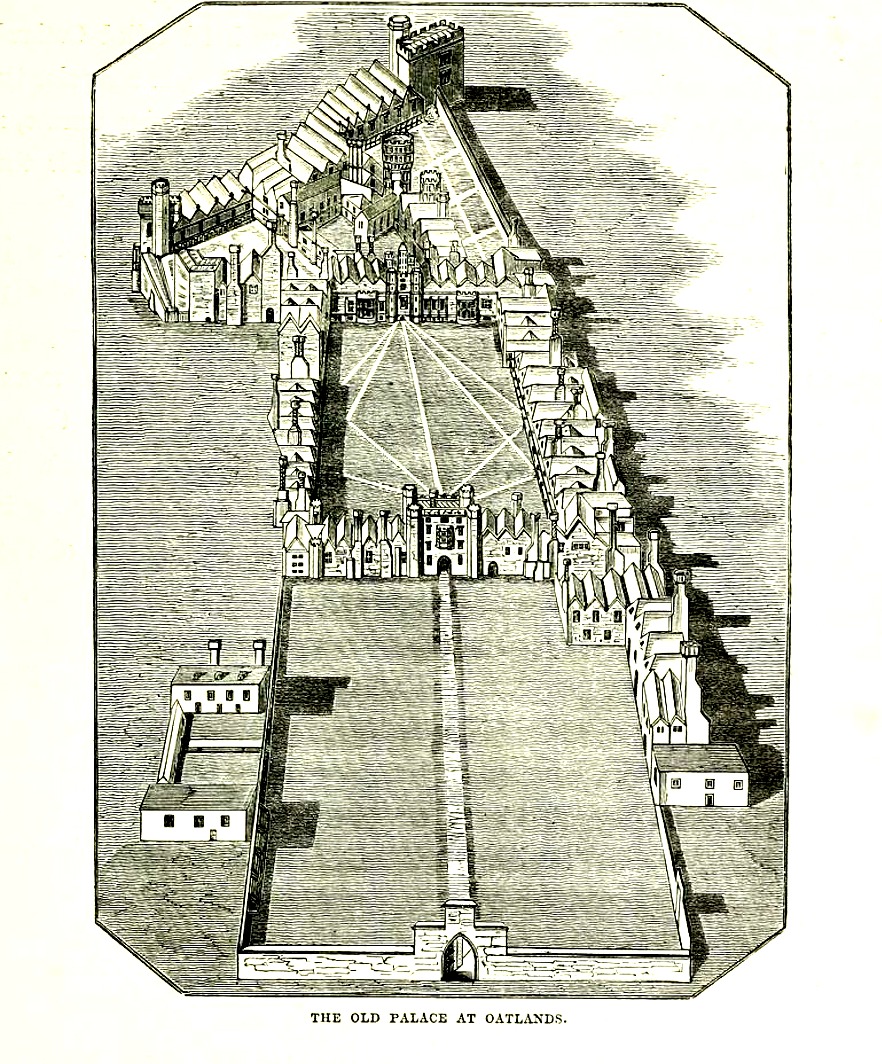As I work on the second volume of the Henrietta of France Trilogy, I have been researching Oatlands Palace where Henriette stayed with all of her living children together for one of the last times before war divided them. While Henry VIII had intended Hampton Court to be the King's hunting lodge, and Nonsuch to be the Prince of Wales' hunting lodge, Oatlands was to be the Queen's hunting lodge. Sadly, it no longer exists. From Royal Palaces:
At the time of Henry’s death Oatlands was classed as a ‘standing house’, this meant that it was one of the few that was kept permanently furnished in readiness for the king. Elizabeth I used Oatlands for short summer breaks but under James I the house, once more, took on its original purpose. It was granted to Anne of Denmark, his queen, in 1611 and was used almost every summer for hunting trips. Anne commissioned Inigo Jones to modernise the interiors, most of which were more or less as Henry VIII had left them. The Tudor furniture was thrown out and brand new beds, tables and chairs were commissioned; silk wall hangings were woven and panelling replaced with designs of a more contemporary feel.
After Anne of Denmark’s death in 1619 James continued to use Oatlands for hunting trips so much so that he had his bedchamber rebuilt to make his visits more comfortable. Yet it was in the reign of his son that Oatlands had its golden age.
On his accession in 1625 Charles I made Oatlands over to his queen. Henrietta Maria was a French Princess who essentially regarded English taste in interior decoration old fashioned and provincial. She refitted her London residence, Somerset House, and soon did the same at Oatlands. Her architect was Inigo Jones who replaced the remaining Tudor chimneypieces with more modern ones in a French style and redesigned panelling and door cases.
New hangings and furniture were ordered for the royal lodgings. Perhaps the most important improvement was in Henrietta Maria’s gallery where, on the ground floor, a series of stucco frames designed by Jones framed views of her other houses, such as Pontefract castle, Eltham Palace and Oatlands itself. When she had finished Oatlands was the most modern and comfortable of all the royal country houses. As a result it became the usual summer residence of the Stuart Court between 1635 and 1642.
The civil war was disastrous for England’s royal palaces. Outside London only Hampton Court was to be kept. All the other palaces were to be sold to pay off parliament’s debts. Most were simply auctioned for their building materials and this was the fate of Oatlands. By 1660 all that remained were the garden walls. (Read more.)
Oatlands was where Henry VIII married his fifth queen, the very young and ill-fated Katherine Howard. From The Tudor Travel Guide:
By the mid 1530s, the principal country seat of the English monarchy had moved westwards from Greenwich to Hampton Court. According to Simon Thurley’s contribution in Poulton’s Excavations at Oatlands Palace, the acquisition of Oatlands in 1537 from the wealthy Reed family was: "… part of a project masterminded by Thomas Cromwell, to provide the new palace [Hampton Court] with the ancillary lands and subsidiary houses necessary for its status."
At its peak, The Honour of Hampton Court consisted of a huge area covering 40,000 acres. This included the palaces of Oatlands and later, Nonsuch. The transformation of Oatlands was closely linked with the development of Henry’s principal out of town residence; the same master craftsmen oversaw its remodelling, and a road was built directly between the two in the summer of 1537. It has been proposed by Thurley that the intention was that Hampton Court would be assigned as the king’s residence, Oatlands the queen’s, and Nonsuch reserved for the use of Edward, Prince of Wales. Given the timing of this building project, the hypothesis is that the manor of Oatlands was originally intended as a palace for Anne of Cleves. (Read more.)
Share



















No comments:
Post a Comment